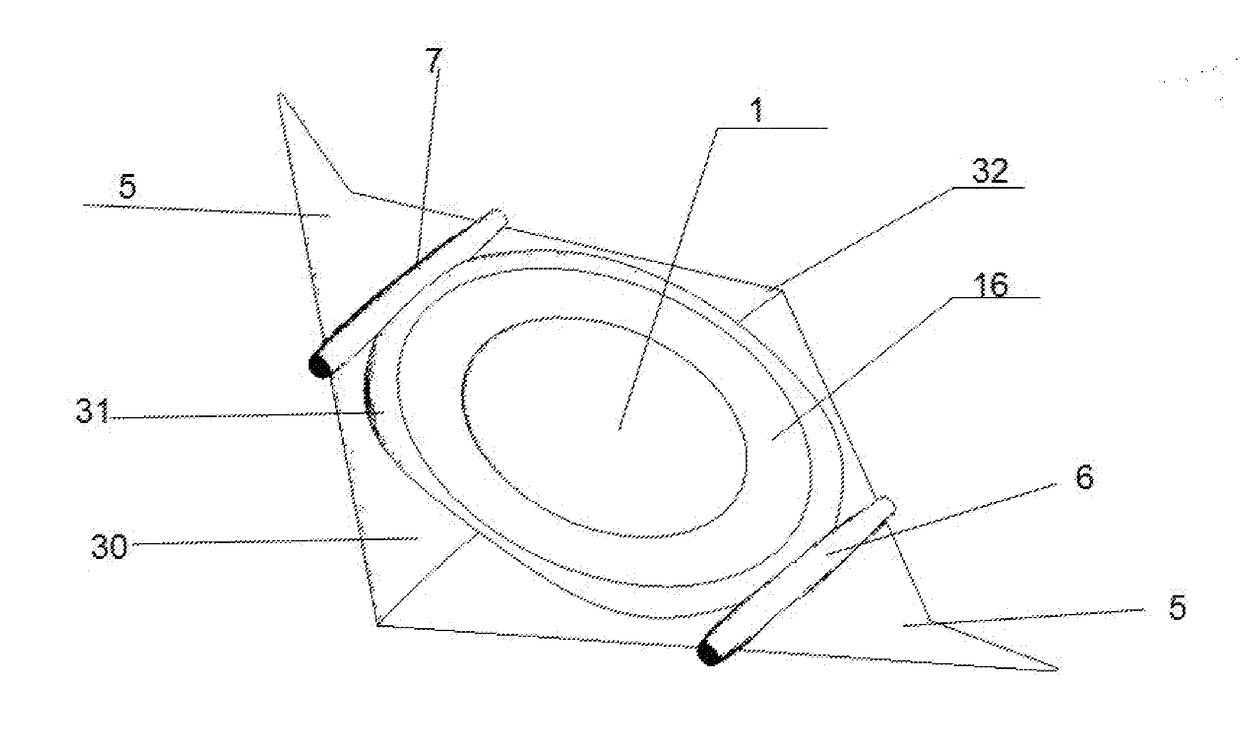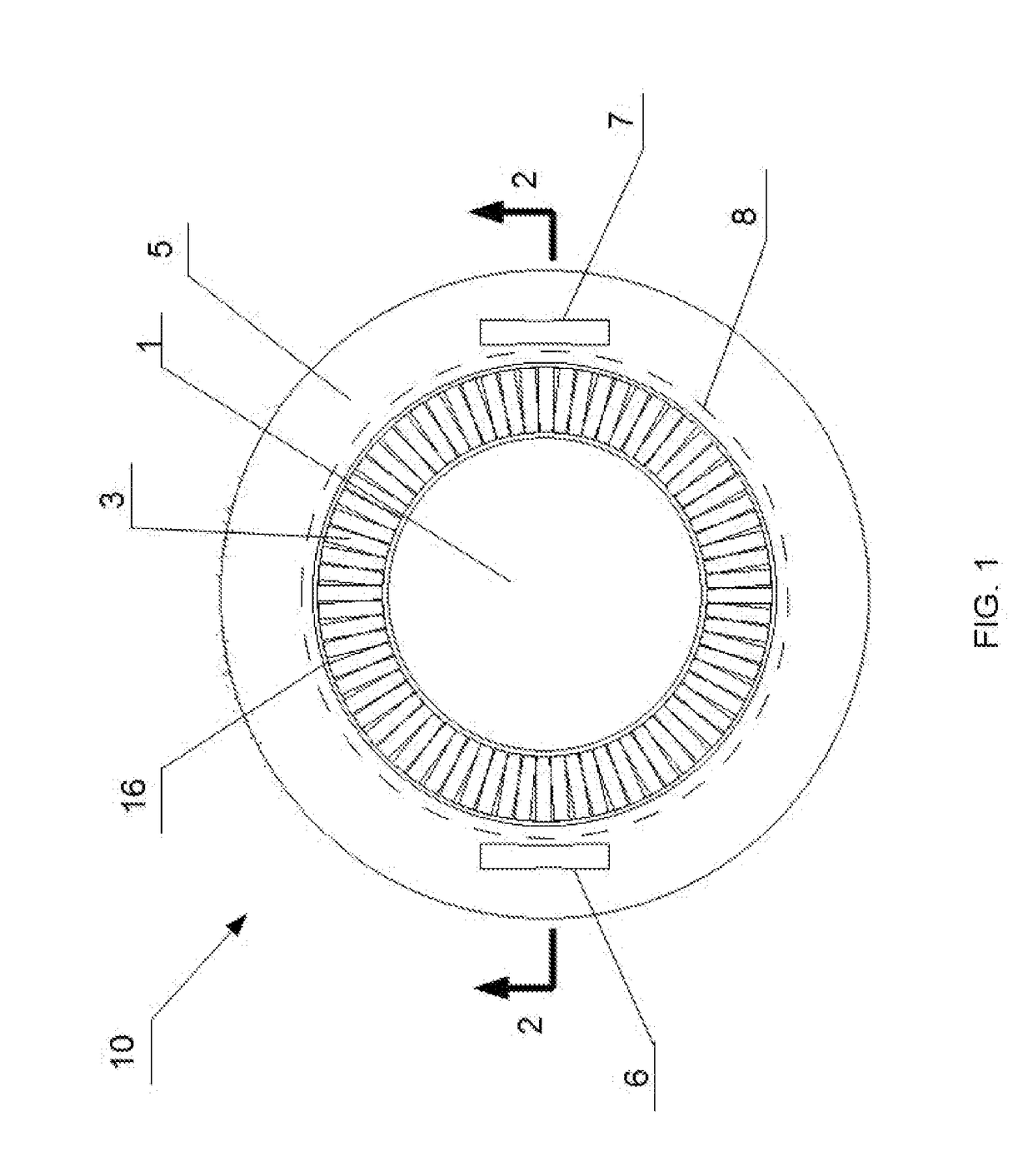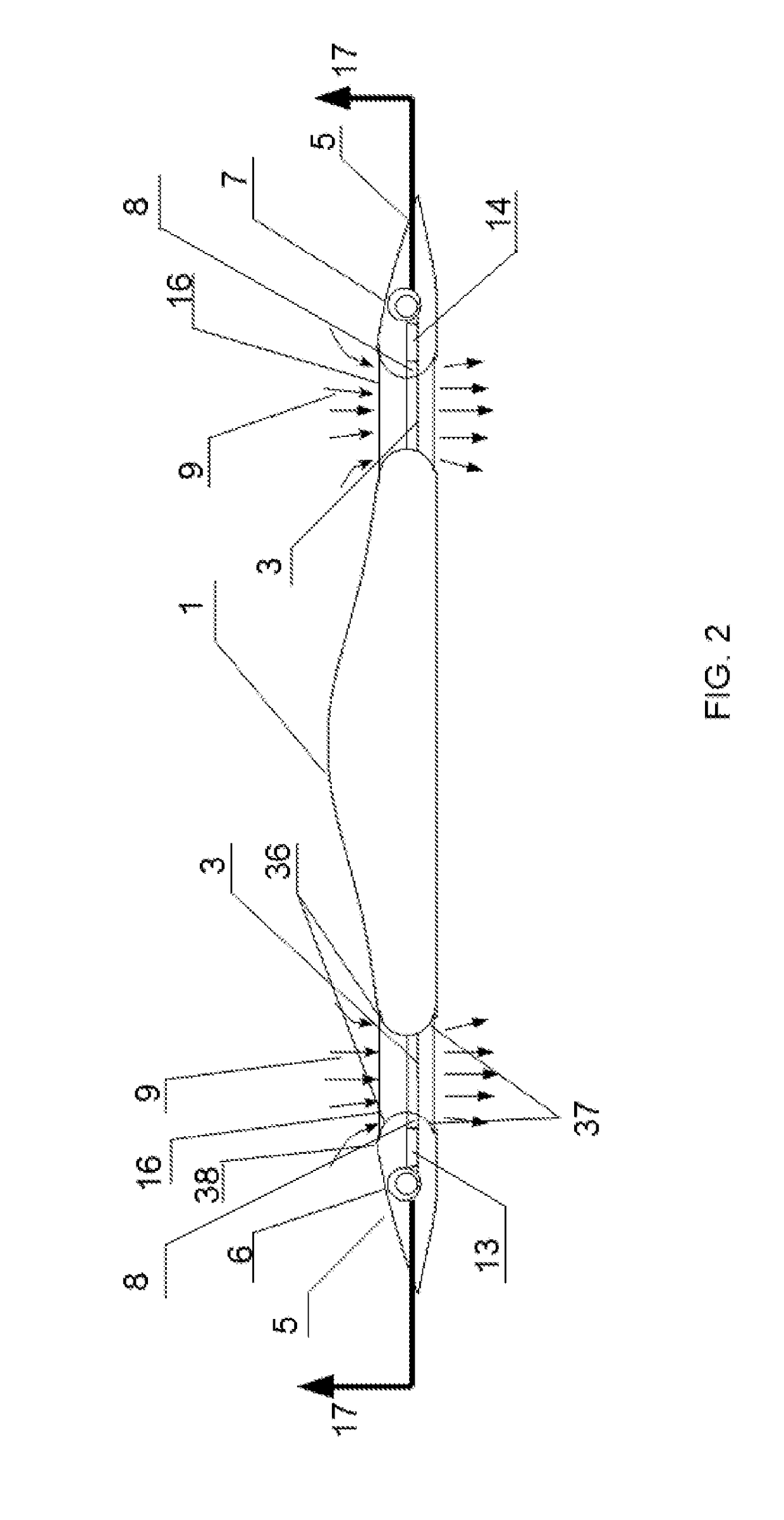Annular lift fan vtol aircraft
a technology of vertical lift and aircraft, which is applied in the direction of vertical landing/take-off aircraft, jet type power plants, drag reduction, etc., can solve the problems of large aerodynamic drag, relative slow forward speed, and limited forward speed of helicopters less than 200 knots, and achieve high efficiency
- Summary
- Abstract
- Description
- Claims
- Application Information
AI Technical Summary
Benefits of technology
Problems solved by technology
Method used
Image
Examples
Embodiment Construction
[0023]The invention relates to aircraft with annular lift fan system capable of efficient vertical takeoff and landing and horizontal flight. Referring now to the figures, and more particularly to FIG. 1, aircraft according to a first embodiment of the present invention is designated in its entirety by reference number 10. The aircraft 10 has a central fuselage 1, an annular duct 16 in which a lift fan set 3 is mounted, an outer wing 5, and two turbofan forward engines 6, 7 to propel the aircraft in cruise flight. The forward engines can be one, two or more, and can be any type of engines used in the aerospace industry, such as turbojet engine, turbopropeller engine, turboshaft engine, piston engine, electric motor, without departing from the scope of the present invention. The lift fan set 3 can be pneumatically (gas-driven), mechanically (shaft-driven), or electrically (motor-driven) coupled with the engines 6, 7 in VTOL. For gas-driven mode, a rectangular-shaped gas chamber 8 is ...
PUM
 Login to View More
Login to View More Abstract
Description
Claims
Application Information
 Login to View More
Login to View More - R&D
- Intellectual Property
- Life Sciences
- Materials
- Tech Scout
- Unparalleled Data Quality
- Higher Quality Content
- 60% Fewer Hallucinations
Browse by: Latest US Patents, China's latest patents, Technical Efficacy Thesaurus, Application Domain, Technology Topic, Popular Technical Reports.
© 2025 PatSnap. All rights reserved.Legal|Privacy policy|Modern Slavery Act Transparency Statement|Sitemap|About US| Contact US: help@patsnap.com



